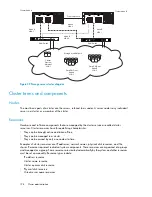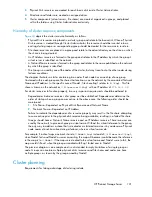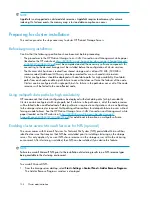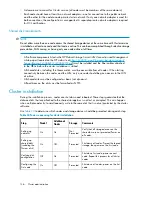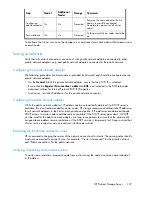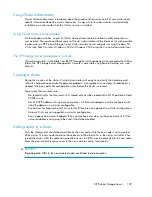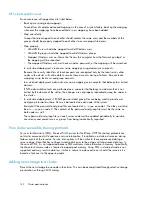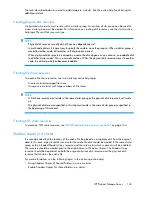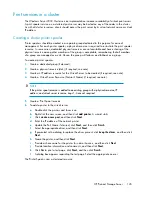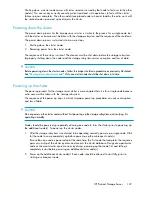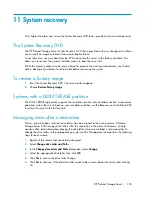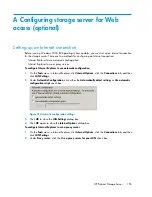
Geographically dispersed clusters
Cluster nodes can be geographically dispersed to provide an additional layer of fault tolerance.
Geographically dispersed clusters are also referred to as stretched clusters.
The following rules must be followed with geographically dispersed clusters:
•
A network connection with latency of 500 milliseconds or less ensures that cluster consistency can
be maintained. If the network latency is over 500 milliseconds, the cluster consistency cannot be
easily maintained.
•
All nodes must be on the same subnet.
Cluster groups and resources, including file shares
The Cluster Administrator tool provides complete online help for all cluster administration activities.
Cluster resources include administrative types of resources as well as file shares. The following
paragraphs include overview and planning issues for cluster groups, cluster resources, and clustered
file shares.
Creating and managing these resources and groups must be managed through Cluster Administrator.
Cluster group overview
A default cluster group is automatically created when the cluster is first created. This default cluster
group contains an Internet Protocol (IP) Address resource, a Network Name resource, and the Quorum
disk resource. When the new cluster is created, the (IP) address and the cluster name that were
specified during setup are set up as the IP address and network name of this default cluster group.
CAUTION:
Do not delete or rename the Cluster Group or IP Address. Doing so results in losing the cluster and requires
reinstallation of the cluster.
When creating groups, the administrator's first priority is to gain an understanding of how to manage
the groups and their resources. Administrators may choose to create a resource group and a virtual
server for each node that will contain all resources owned by that node, or the administrator may
choose to create a resource group and virtual server for each physical disk resource. Additionally,
the administrator should try to balance the load of the groups and their resources on the cluster
between the nodes.
Node-based cluster groups
Creating only one resource group and one virtual server for each node facilitates group and resource
administration. This setup allows administrators to include all file share resources under one group.
Clients access all of the resources owned by one node through a virtual server name.
In node-based cluster groups, each group has its own network name and IP address. The administrator
decides on which node to place each physical disk resource. This configuration provides a very coarse
level of granularity. All resources within a group must remain on the same node. Only two IP addresses
and network names are required. This configuration creates less overhead for resource and network
administration. A possible disadvantage of this approach is that the resource groups can potentially
grow large when many file shares are created.
Cluster administration
140
Summary of Contents for PROLIANT DL160 G5
Page 1: ...HP ProLiant Storage Server user guide Part number 440584 005 First edition June 2008 ...
Page 34: ...Installing and configuring the server 34 ...
Page 52: ...Server components 52 ...
Page 94: ...File server management 94 ...
Page 112: ...Microsoft Services for Network File System MSNFS 112 ...
Page 152: ...Troubleshooting servicing and maintenance 152 ...
Page 154: ...System recovery 154 ...
Page 174: ...Index 174 ...



